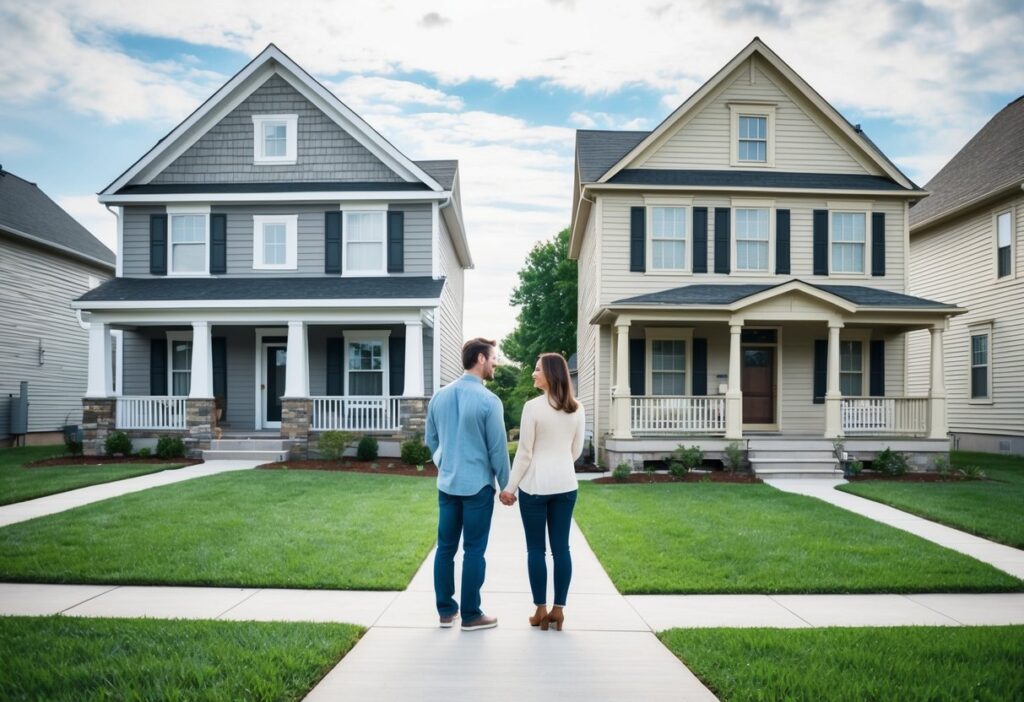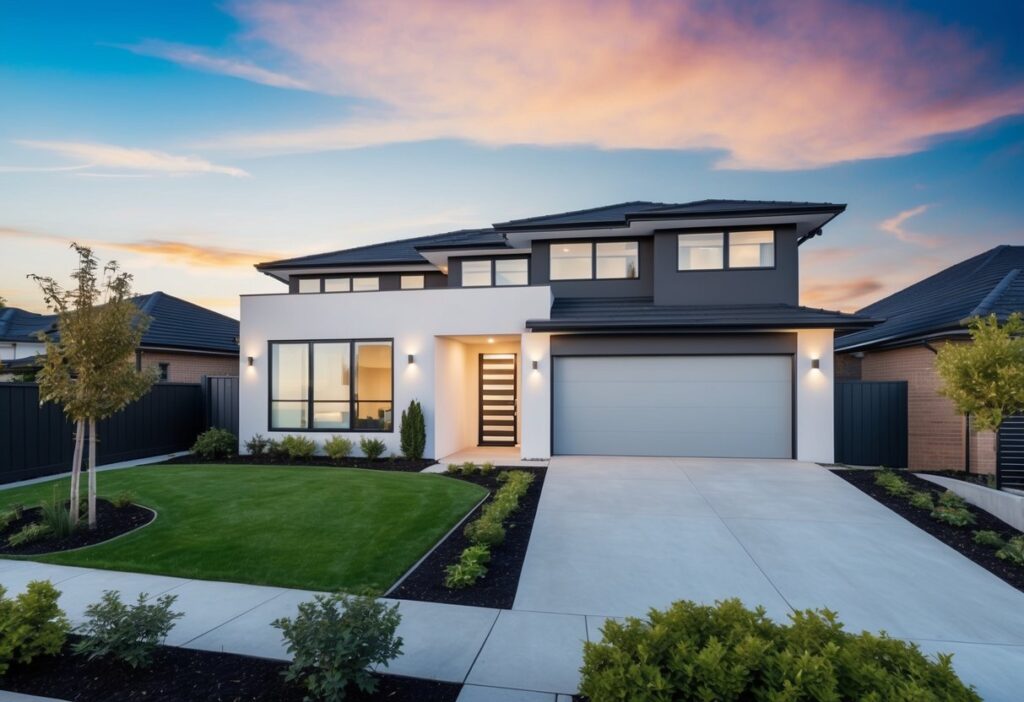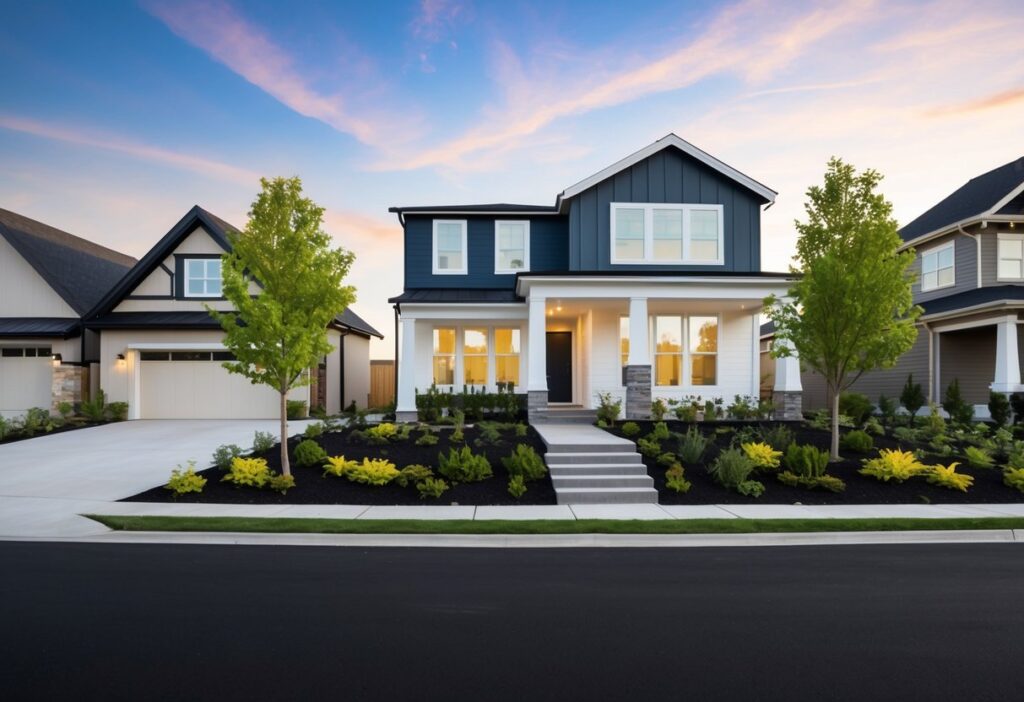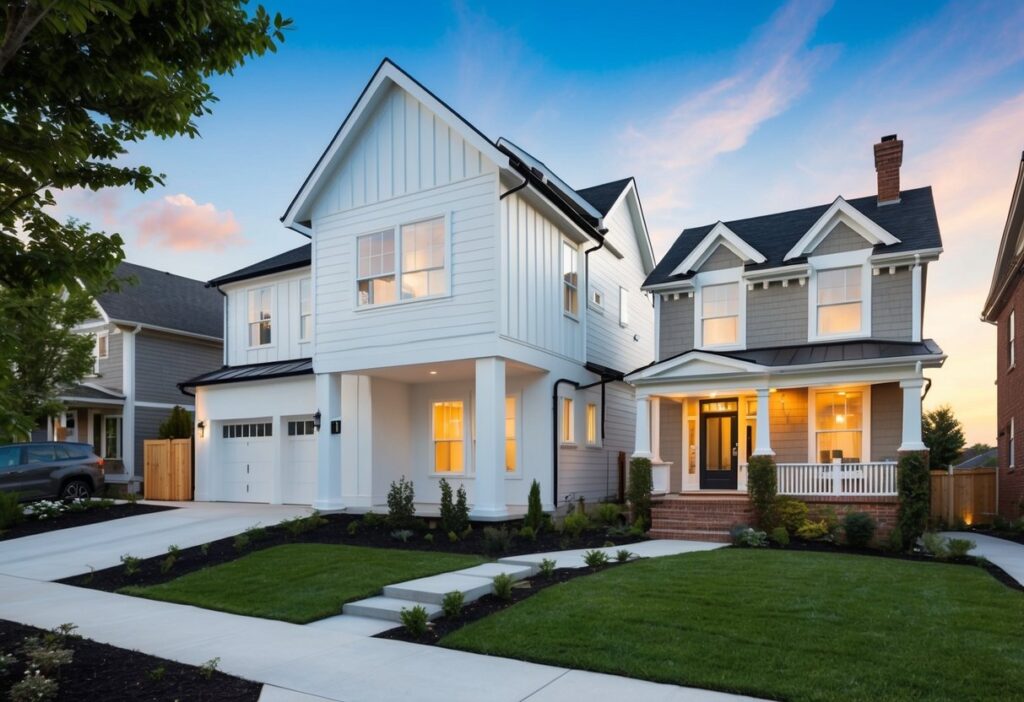Anúncios
Buying your first home is one of life’s biggest decisions. Many first-time buyers face a crucial choice right from the start: should they purchase a newly built home or an existing one?
Both options have distinct advantages and challenges worth considering.

The right choice between a new build and existing home depends on your priorities regarding customization, maintenance, cost, and location.
New construction offers modern features and fewer immediate repairs, while existing homes typically provide established neighborhoods, mature landscaping, and sometimes lower price points.
The decision ultimately affects not just your budget but your daily lifestyle for years to come. Understanding the key differences helps ensure you make an informed choice that aligns with your long-term goals and immediate needs.
Evaluating Your Priorities

Buying your first home involves weighing several important factors that align with your lifestyle needs and financial situation. Different buyers have different priorities that will influence whether a new build or existing home makes more sense.
Location and Community
Location remains one of the most crucial factors in any home purchase.
Existing homes typically occupy established neighborhoods with mature trees, developed infrastructure, and proximity to city centers. These communities often feature local businesses, public transportation access, and established school systems.
New developments, however, tend to be located in growing suburban areas. These locations may offer less congestion and newer community amenities like parks and recreation centers. Some master-planned communities include walking trails, pools, and community centers.
Consider your daily commute, preferred school districts, and lifestyle preferences. A shorter drive to work might outweigh the appeal of a newer home. Similarly, access to restaurants, shopping, and entertainment venues might influence your decision more than having the latest home features.
Personalization and Character
Existing homes offer established character and unique architectural details often absent in new construction. These properties might feature crown molding, hardwood floors, brick fireplaces, and other charming elements that tell a story.
New builds provide the opposite advantage: customization. Buyers can often select:
- Floor plans
- Finishes (countertops, flooring, fixtures)
- Paint colors
- Appliance packages
- Smart home technology options
An existing home might require renovation to match your style preferences. This creates opportunity for personalization but demands time and additional investment. With new construction, you start with a blank slate designed to your specifications.
Some buyers value the uniqueness of older homes. Others prefer the modern layouts and energy efficiency of new construction.
Short-Term and Long-Term Costs
The financial picture differs significantly between new and existing homes.
Short-term considerations:
- Existing homes may require immediate repairs or updates
- New homes typically include warranties covering major systems
- Older homes often come with higher insurance premiums
- New builds may have additional closing costs or premium lot fees
Long-term factors:
- New homes feature better energy efficiency, reducing utility bills
- Older homes may need major system replacements (roof, HVAC, plumbing)
- Property taxes often differ between new and established neighborhoods
- HOA fees in new developments can add significant monthly expenses
Maintenance costs generally increase with the age of a home. A new build might save money on repairs during the first 5-10 years of ownership.
Pros of Buying a New Build

New builds offer several compelling advantages for first-time buyers looking to enter the housing market. These homes provide modern features, personalization options, and efficiency benefits that many existing properties simply cannot match.
Modern Amenities and Technology
New construction homes come equipped with the latest amenities and technology. Smart home features are often standard, including programmable thermostats, advanced security systems, and energy-efficient appliances. Many new builds include USB outlets, high-speed internet wiring, and smart home hubs built right into the design.
Floor plans in new homes reflect current living preferences. Open concept layouts, spacious primary bedrooms, and walk-in closets are typically standard. Buyers won’t need to worry about outdated electrical systems or plumbing that might require expensive upgrades.
The materials used in new construction tend to be more durable and require less immediate maintenance. Windows, roofing, and HVAC systems all carry warranties, giving first-time buyers peace of mind about major expenses in the early years of homeownership.
Customization Options Before Construction
One significant advantage of buying pre-construction is the ability to personalize the home.
Buyers can often select their preferred flooring, cabinetry, countertops, and paint colors before the builder completes the property.
Many builders offer design packages at different price points, allowing buyers to customize within their budget. Some options might include:
| Customization Area | Typical Options |
|---|---|
| Flooring | Hardwood, tile, carpet, luxury vinyl |
| Kitchen | Cabinet styles, countertops, backsplash designs |
| Bathrooms | Fixture finishes, shower/tub configurations |
| Lighting | Fixture styles, smart lighting integration |
Structural modifications may also be possible during early phases. This might include adding extra rooms, expanding the garage, or choosing different layout options that better suit the buyer’s lifestyle.
Energy Efficiency and Sustainability
New homes are built to meet current energy codes, making them significantly more efficient than older properties.
Better insulation, high-efficiency windows, and modern HVAC systems reduce energy consumption and lower utility bills.
Many new builds incorporate sustainable features like:
- Solar panel readiness or installation
- Water-saving fixtures and appliances
- Energy Star certified systems and appliances
- Improved air filtration and ventilation systems
These green features not only reduce monthly costs but also minimize environmental impact. The improved air quality and reduced allergens in new construction can benefit residents with respiratory sensitivities.
Energy-efficient homes often qualify for special mortgage programs or tax incentives. These financial benefits, combined with lower utility bills, can make the slightly higher purchase price of a new build worthwhile over time.
Cons of Buying a New Build

New builds offer many advantages, but they also come with several drawbacks that first-time buyers should carefully consider before making their decision.
Higher Initial Investment
New construction homes typically cost 10-20% more than comparable existing homes in the same area. This premium reflects the modern features, updated building codes, and energy-efficient systems included in new builds.
The base price advertised by developers often excludes many desirable features. Upgrades like granite countertops, hardwood floors, and premium appliances can quickly add thousands to your final cost.
Many new developments also have homeowners association (HOA) fees. These monthly payments cover community amenities and maintenance but add to your overall housing expenses.
Closing costs for new builds can be higher too. You might need to pay for additional inspections during various construction phases.
Construction Time and Delays
When buying a new build, you’ll likely wait 6-9 months from contract signing to move-in day. This timeline can extend even longer during material shortages or labor issues.
Weather conditions frequently cause delays. A particularly rainy season or unexpected cold snap can set construction back by weeks.
Supply chain disruptions have become more common, affecting everything from lumber to appliances. Your move-in date might shift multiple times due to these factors.
Living arrangements during construction can be challenging. You might need a short-term rental or extended lease, potentially causing financial strain or logistical hassles.
Limited Negotiation Power
Unlike the resale market, new build prices are generally fixed. Developers rarely reduce their base prices as this could devalue other homes in the development.
Instead of price negotiations, builders might offer incentives like closing cost assistance or free upgrades. However, these concessions are typically less valuable than a direct price reduction.
The model home you tour often showcases premium finishes and upgrades not included in the base price. This can create misleading expectations about what you’re actually purchasing.
Builders typically require you to use their preferred lenders to qualify for incentives. This limits your ability to shop around for the best mortgage rate and terms.
Pros and Cons of Buying an Existing Home

Existing homes offer unique benefits and challenges that new builds simply can’t match. These established properties each tell their own story through architectural details and neighborhood connections.
Character and Established Neighborhoods
Existing homes often feature distinctive architectural elements that new construction lacks. Crown molding, hardwood floors, and built-in bookcases add character that’s difficult to replicate in modern builds.
Mature neighborhoods typically have full-grown trees, established landscaping, and a defined community feel. These areas usually have set traffic patterns, nearby amenities, and well-established school districts.
You’ll know exactly what surrounds your potential home. The neighborhood’s reputation, nearby property values, and local amenities are already established, reducing uncertainty about future development.
Many existing neighborhoods have stronger community bonds than new developments. Neighbors have had time to build relationships and establish local traditions like block parties or holiday events.
Potential for Value Increase
Existing homes may offer better opportunities for appreciation, especially in desirable locations. Properties in established neighborhoods with limited new construction often hold value well.
Renovation projects can significantly boost an existing home’s worth. Simple updates to kitchens and bathrooms typically yield the highest returns on investment, often 70-80% of project costs.
The purchase price for existing homes is typically 15-20% lower than comparable new construction. This lower entry point leaves more room for potential appreciation as you build equity.
Strategic improvements allow owners to target specific upgrades that add value. Unlike new builds where most features are priced into the initial cost, existing homes let buyers invest selectively.
Immediate Availability
Move-in timelines for existing homes are considerably shorter than new construction. Once financing and inspections are complete, buyers can often move in within 30-45 days.
You can see exactly what you’re buying with an existing home. There’s no waiting for construction to finish or wondering if the final product will match your expectations.
Existing homes allow for better negotiation opportunities. Sellers may be motivated by timelines or market conditions, creating potential for price reductions or concessions.
When viewing existing homes, you can experience the actual living spaces. This gives buyers a true sense of room sizes, natural lighting, and how the home functions—impossible to gauge from floor plans alone.